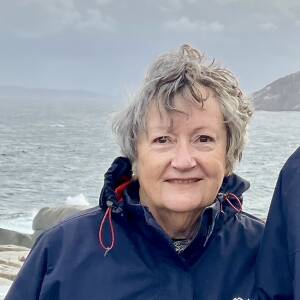Evil Banksia Man
This is the banksia in flower - a pretty if unusual plant - but when he loses the "prettiness" he becomes the enemy of the little ragged blossoms and the gumnut babies of May Gibbs "Snugglepot and Cuddlepie" stories. See Ragged Blossoms
There are few other characters in Australian children’s fiction as well-known or well-loved as the gumnut babies. May Gibbs loved the bush and used it as the setting for her stories; the perennial popularity of her work is due to the creative imagining of her characters as the fruits and flowers of Australian plants, and her skill as an artist. The popularity of her characters has also left its mark on Australian English.
May Gibbs was born in England, emigrating with her family to Australia in 1881 when she was four. She was educated in Perth and London and pursued a career as an illustrator and writer, settling in Sydney in 1913. Here she began to draw her distinctive gumnut and blossom babies, and in 1916 she published Gumnut Babies, the first book in which they appear as characters. The books were an immediate success. Snugglepot and Cuddlepie, Bib and Bub, Little Ragged Blossom, and the Banksia Men became for many a part of the experience of Australian childhood.
—A Banksia Man, the stuff of nightmares.
Of all May Gibbs’ characters it is the wicked banksia men, the ne’er-do-wells who frighten the gumnut babies and bushfolk, who have especially resonated in children’s imaginations through the generations:
Hell was under the well near the cow paddock, deep and murky and peopled by gnarled and knobby banksia men who lurked there waiting for the unguarded to fall in. (E. Smith, Saddle In the Kitchen, 1974)
May Gibbs based her villains on the distinctive woody fruiting cones of the native banksia (a genus of trees and shrubs named for Joseph Banks, the naturalist on James Cook’s Endeavour voyage). For generations of Australians who have grown up with the gumnut babies, life imitates art: it is difficult to see a banksia cone without seeing it as a banksia man. Indeed since the 1920s banksia cones have been referred to as banksia men
(www.anu.edu.au/)

Comments
Sign in or get an account to comment.


